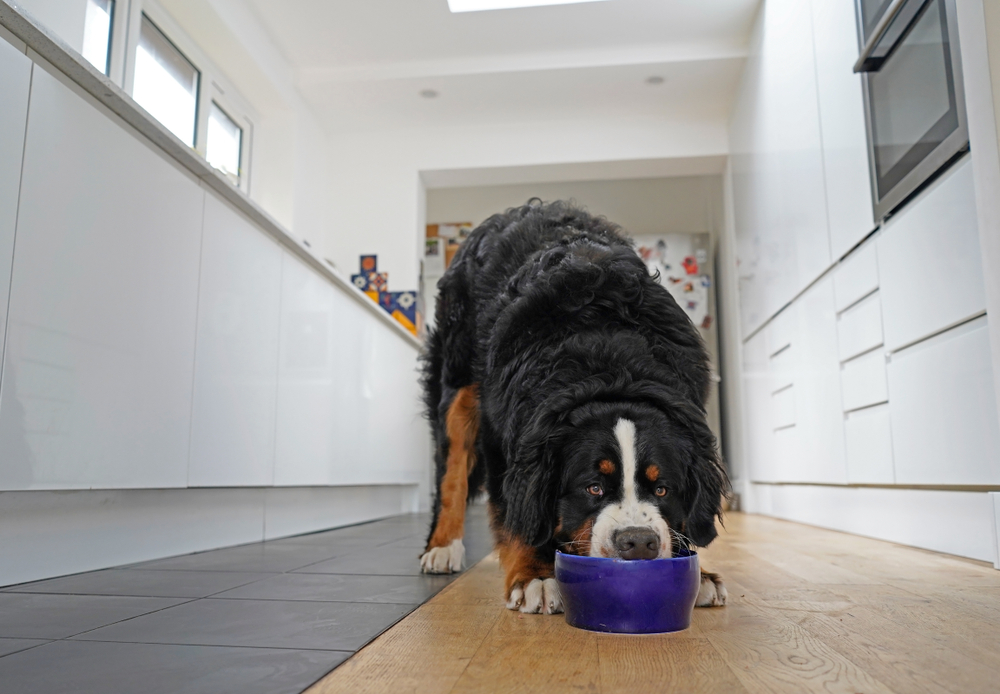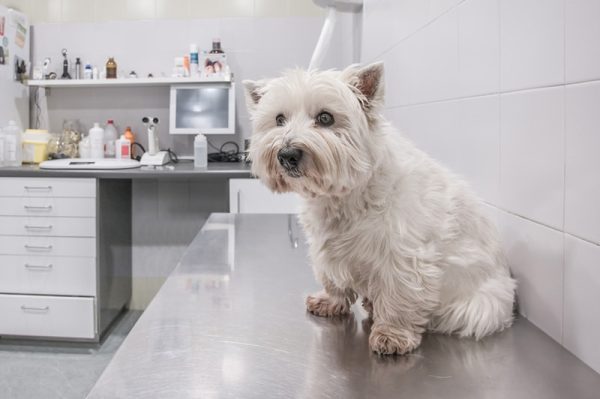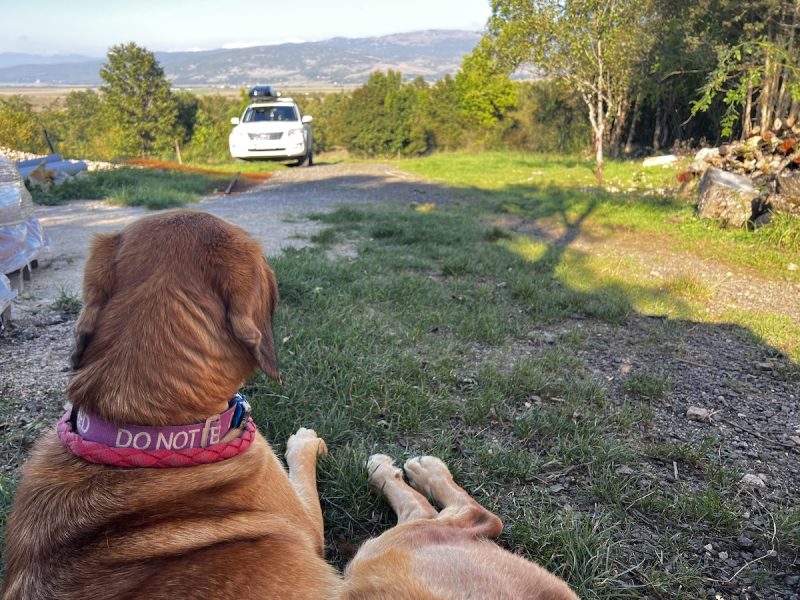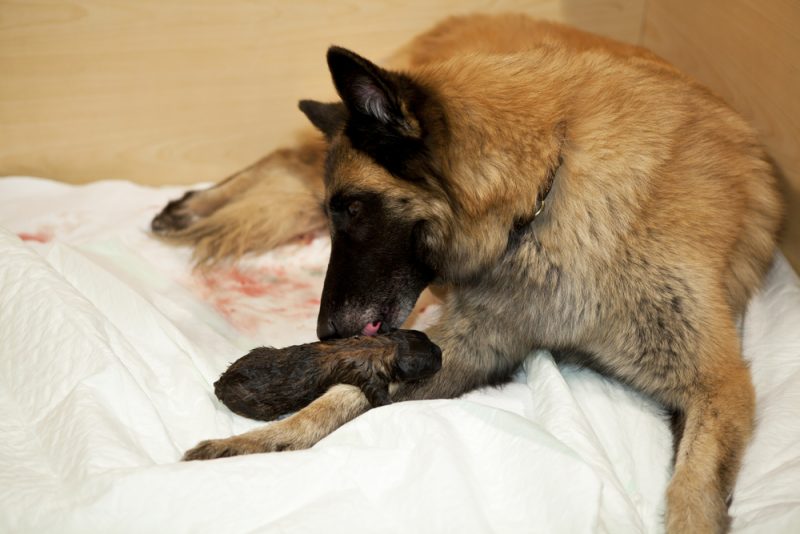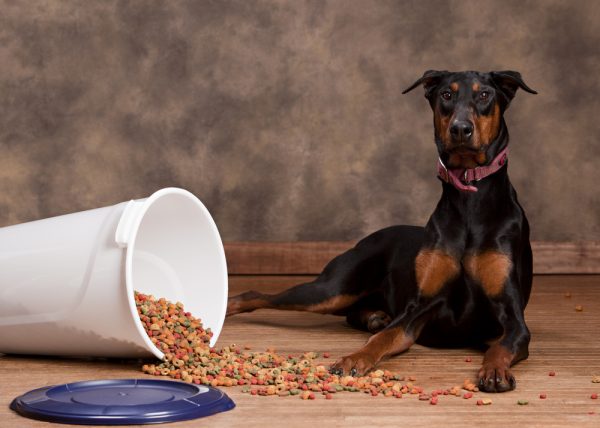In this article
It’s a situation all too common for dog owners: Your otherwise sweet pup suddenly lashes out one day as you approach them while they eat or gnaw on their favorite chew, perhaps even barking and biting to tell you to back off or else. The behavior is one you don’t expect, but the consequences can be significant. A switch seems to flip as the household dynamic changes, often leaving the other family members feeling forever affected.
Resource guarding is a frequent occurrence for dogs. Many sadly return to shelters because of it, with their history of possessive aggression making them more challenging to rehome and more likely to face euthanasia. Yet, experience doesn’t ensure future issues. Even the worst cases can change in a new setting, as we’ll discuss in this look at resource guarding in dogs and how you can prevent it.

How Does Resource Guarding Work?
Resource guarding is a series of specific avoidance, threatening, and aggressive behaviors a dog exhibits to control and limit access to food or non-food items they find valuable. Dogs usually display this behavior toward other dogs and pets in the house but may also lash out at humans who encroach on them. It’s a perfectly normal behavior seen in numerous animals, ranging from birds to baboons.
It doesn’t matter whether the threat is real or perceived; a dog sensing competition from somebody nearby will do what they can to guard their keep. Resource guarding appears in one of three ways:

- Rapid ingestion: Your dog will quickly eat an edible item if they feel threatened
- Avoidance: Your dog will move their body to protect the item or take it to a different, solitary location
- Aggression: Your dog delivers a vocal warning or physically defends their item
Generally, avoidance and rapid ingestion tend to occur together, while aggression is a standalone behavior. Owners should still monitor and address avoidance or rapid ingestion that may indicate resource guarding, as this can evolve into eventual aggression.
What Resources Do Dogs Guard?
Dogs will resource guard anything they feel is limited in availability and others want. The most common items are toys, bones, stolen materials, and other high-value objects. They often also show guarding behavior when you take food away or when a person or animal approaches while they eat. Some dogs resource guard their preferred people or specific areas, such as when someone nears them in their favorite sleeping spot.
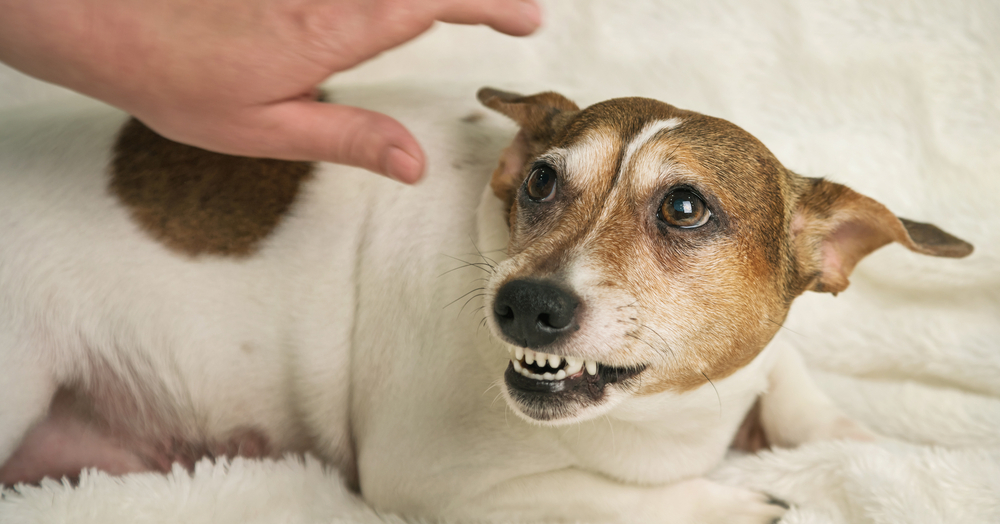
What Are the Signs of Resource Guarding?
Resource guarding often appears as a progressive series of actions that may lead to physical attacks. The following are some of the primary signs of the behavior when a person or pet approaches a dog with a guarded item:
- The dog moves away or runs off with the item
- The dog quickly consumes the item if it’s edible, with no break between bites
- Stiff, tense, or frozen body position
- Ears perked and forward
- Hard stare
- Growling
- Lip curling, baring teeth, and snarling
- Snapping at the air
- Lunging
- Nipping or aggressive biting
When Do Dogs Resource Guard?
Predicting when a dog will show resource-guarding behavior isn’t easy. Even those who guard in one situation may not show the habit in other contexts. For instance, dogs that enter shelters because of resource guarding in their old home often don’t show the same behaviors with their new owners.
Resource guarding habits will depend on variable factors, including:
- Environment
- The type of resource
- The dog’s health
Across various studies, shelter dogs assessed as resource guarders continued their possessive habits in their new home in 10%–55% of cases. Context can make all the difference. The behavior is more common in multi-dog households where pets have similar desires and thus more room for conflict. Highly impulsive and more fearful dogs will be more likely to become aggressive.
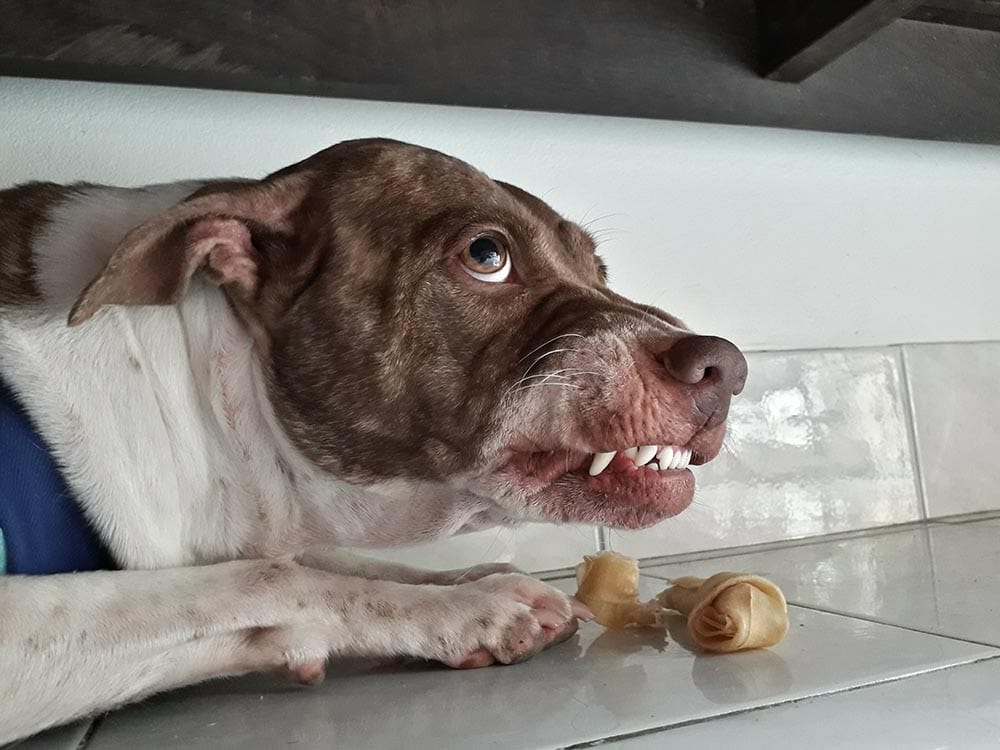
Puppy Resource Guarding
A 2024 study investigated resource-guarding behaviors among puppies. It identified factors that may increase the odds of competitive behavior, including:
- Large litter sizes
- Low nursing success and nursing intervention
- Lack of play among litter members
- Preferences for specific toys
- Dams who resource guard
Many of these aspects leading to guarding behavior occur within the first few weeks of life, so much of it is out of the owner’s hands. Prospective pet parents must do their due diligence in vetting breeders. Health history, genetic testing, care practices, and the puppy’s environment deserve attention to ensure the breeder supports the dog’s well-being and good behavior before offering them to owners.

Frequently Asked Questions
How Can I Reduce Resource Guarding in My Dog?
Ideally, owners will be proactive, preventing resource-guarding behaviors before they happen. A dog who has a chance to practice resource guarding will be more inclined to do it in the future, and much of it stems from uncertainty, anxiety, and fear. Preventative measures, therefore, may include:
- Maintaining a predictable schedule
- Using positive reinforcement training without scolding or harsh punishment
- Socialization from a young age, exposing puppies to positive experiences with different people, animals, and settings
Counterconditioning and desensitization can help a dog overcome their guarding slowly. An example of counterconditioning would be approaching your dog within their reaction threshold while they have the item they’re guarding. You can approach at a safe distance so they won’t react, toss a high-value treat while your dog is calm, and then move away. Over time, their threshold will improve as they see you aren’t a threat, and you can close the gap.
Eventually, you’ll be able to present your hand nearby, leave it for a few seconds without them reacting, and offer a treat for staying relaxed. Though this won’t generalize the behavior, it will help you overcome your dog’s daily anxiety toward a particular person or pet they deem threatening. From there you can start working with a veterinarian on tackling the unwanted behavior.
If you need to speak with a vet but can't get to one, head over to PangoVet. It's our online service where you can talk to a vet online and get the advice you need for your pet — all at an affordable price!

Teach Obedience Commands
Daily obedience training is fundamental in building a bond and good habits with any dog. A few cues can also go a long way in reducing resource-guarding behavior.
By teaching “drop it” or “leave it,” you’ll condition a positive response to your cue, telling your dog a better reward is coming by leaving the item alone. Alternatively, you can perform a “trade” with a higher-value reward to remove the item without risking a hostile reaction.
Practice “Learn to Earn”
With basics like a sit/stay or down/stay in place, you can develop a “learn to earn” routine where your dog must perform a task to get what they want. For instance, you can hold off on putting down their food bowl until they sit calmly for a few seconds.
You can find numerous points throughout the day where you can promote patience like this, from letting them out of their crate in the morning to opening the door to prepare for a walk. The consistent application will show your dog the rewards of being calm and considering their actions, helping to relieve impulsive behavior that leads to resource guarding.
Remove Guardable Items
You may have to restrict access to items in certain situations to prevent your dog from showing resource-guarding behaviors and making them a habit. For example, if your dog resource guards their meals, you can try hand-feeding or scatter-feeding to eliminate the bowl and, subsequently, the object of their behavior. For resource guarding around particular items, keep them away until you can provide them to your dog in a safe space.
Set up a crate, den, or closed room where your dog can feel safe with their item. No person or pet should be able to enter while they have it. Ensure the item is locked up and out of sight at all other times, and use your “learn to earn” technique when presenting it to your dog.
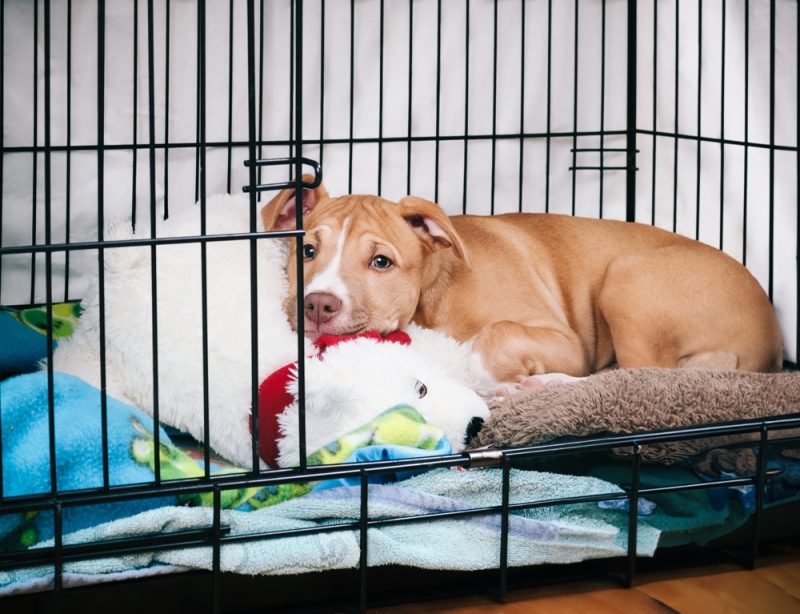
Are Some Dogs More Likely to Resource Guard Than Others?
Resource guarding can become apparent by around 16 weeks of age. Studies have generally found the behavior more common in adult and senior dogs. Spayed females are more likely to show the behavior than intact females, and mid-sized dogs of any gender and neuter status are less prone to it than small or large breeds.
Dogs of any breed can resource guard since much of the behavior depends on upbringing and experience. Still, mixed breeds tend to show the behavior more often, while Labrador Retrievers and Golden Retrievers may also be more prone to it.

Conclusion
Resource guarding can be a scary situation for owners and a severe risk for the dog. As it progresses to aggression, the behavior can permanently alter relationships, potentially causing families to surrender their beloved pets to shelters where their future can range from uncertain to downright dire.
If your dog is resource guarding, talk to your vet about possible underlying issues, potential solutions, and how these tips can help you fix the problem before it becomes too much to bear.
Featured Image Credit: Kristesoro, Shutterstock
